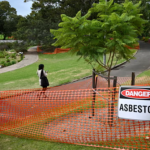Asbestos’ use in film and television is relatively well known – often used as fake snow in iconic movies like The Wizard of Oz. However, the effect of asbestos use in film and television on the risk to human health is less well-known.
A new workers compensation case in Japan’s performing arts and theatre industry is likely to raise awareness of asbestos-related diseases in the performing arts and theatre space, with a former employee of an entertainment production company out of Osaka has been certified as having a work-related illness after being exposed to asbestos at work.
On average, Japan sees about 1,000 workers compensation cases each year that involve asbestos exposure, but this particular case is only the fifth of its kind in the Japanese entertainment industry.
One expert explained that the use of “asbestos was widespread in theatres and other places from early on. There are probably many more victims who were exposed to asbestos without realising it.”
In this particular case, it’s believed that the worker was exposed to asbestos fibres that were contained in the curtains in the theatre. Asbestos was used widely in theatre curtains to fireproof them against the heat of the stage lights.
The labour standards bureau reported that the illness was most likely caused by “exposure to asbestos sprayed on the theatre building as well as asbestos contained in the stage curtains and fire curtains, between 1974 and 1977.”
Historically, stage production and theatre spaces were characterised by enclosed spaces, and the use of asbestos in those spaces included an application to curtains but was applied to absorb excess noise in the spaces, including the walls, spaces above the stage and ceiling. Most commonly, the asbestos was sprayed into those spaces, which made it more likely to deteriorate.
Dr. Yuji Natori, director of the Asbestos Center, explained that, “In the beginning, asbestos was sold for its superiority in soundproofing and sound absorption rather than for fireproofing.”
“Spaces that emphasise sound leakage prevention also have poor ventilation, resulting in high concentrations of asbestos dust. People who are devoted to theatrical performances and music, as well as backstage workers, may also develop mesothelioma.”




